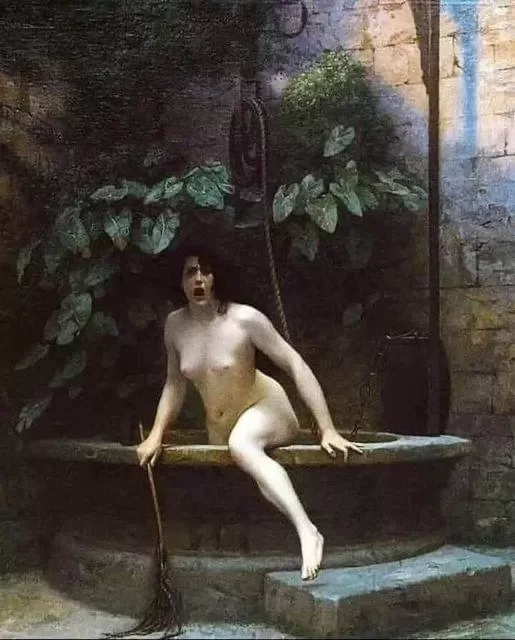The Lie said to the Truth, “Let’s take a bath together, the well water is very nice”.
The Truth, suspicious, tested the water and found out it really was nice. So they got naked and bathed.
But suddenly, the Lie leapt out of the water and fled, wearing the clothes of the Truth.
The Truth, furious, climbed out of the well to get her clothes back.
But the World, upon seeing the naked Truth, looked away, with anger and contempt.
Poor Truth returned to the well and disappeared forever, hiding her shame.
Since then, the Lie runs around the world, dressed as the Truth, and society is very happy … because the world has no desire to know the naked Truth.


Painting: Truth Coming Out Of The Well, Jean-Léon Gérome, 1896.
“Truth Coming Out of the Well” is a famous painting by the French academic artist Jean-Léon Gérôme. It was created in 1896 and is also known by its original French title, “La Vérité sortant du puits armée de sa discipline” which can be translated to “Truth coming out of the well, armed with her whip.”
The painting is known for its allegorical representation of truth and the pursuit of knowledge.
In the painting, a woman representing truth is shown emerging from a well, holding a whip in her hand. The well symbolizes the depths of knowledge and the idea that truth can be found through diligent search and discipline. The whip represents the discipline and rigor required to seek and uphold truth.
Gérôme’s painting is a part of the academic tradition and reflects the ideals of 19th-century French academic art. It conveys the notion that truth can be discovered through effort and education, and that the pursuit of knowledge requires discipline and hard work. The painting has been widely interpreted and has become a symbol of the quest for truth and the importance of intellectual and moral discipline in that pursuit.
Jean-Léon Gérôme (1824-1904) was a French academic painter and sculptor who was highly regarded during the 19th century. He was known for his meticulous and detailed works, often depicting historical, mythological, and Orientalist themes. Gérôme was a prominent figure in the academic art scene of his time and played a significant role in the development of 19th-century French art.
Some of his most famous works include “The Snake Charmer,” “Pollice Verso,” and “The Gladiators,” which often featured scenes from ancient Roman life. He was also known for his Orientalist paintings that depicted scenes from the Middle East and North Africa, reflecting the fascination with exoticism that was prevalent in European art during the 19th century.
Gérôme’s art was characterized by a strong attention to detail and technical precision, and his works were widely exhibited and collected during his lifetime.
He also taught at the École des Beaux-Arts in Paris, influencing and mentoring many aspiring artists. While his style fell out of favor in the later 19th century with the rise of Impressionism, Gérôme’s work is still appreciated for its technical skill and historical themes.
Related stories
Feature series on the art and life of Norman Lindsay – his influences, early work, cartoons and propaganda, sculptures, etchings and lithographs, watercolours and oil paintings.







